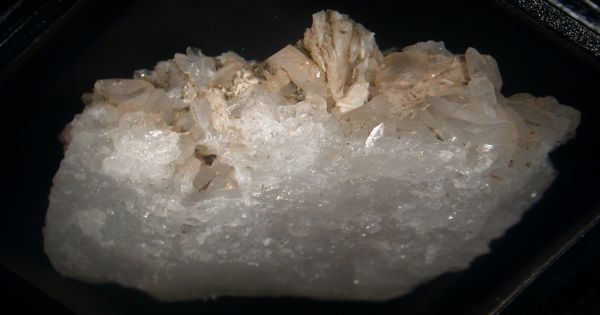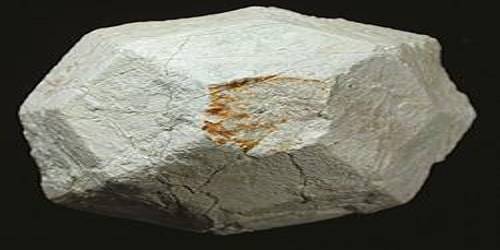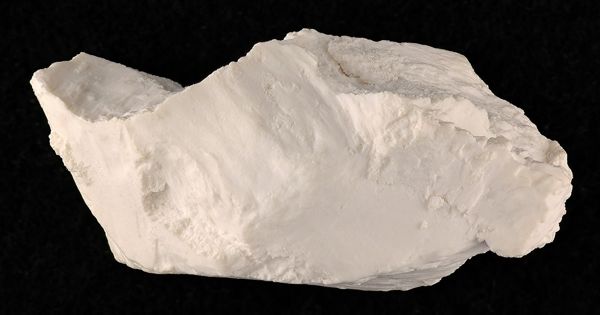Nabesite is a rare silicate mineral of the zeolite group with the chemical formula Na2BeSi4O10·4(H2O). It is an orthorhombic-disphenoidal mineral containing beryllium, hydrogen, oxygen, silicon, and sodium. It occurs as colorless to white orthorhombic crystals in thin platy mica like sheets. It has the zeolite structure.
It was discovered in the Ilimaussaq intrusive complex, of southwest Greenland, and first recognized in 2000.
General Information
- Formula: Na2BeSi4O10·4(H2O)
- Specific Gravity: 2.16
- Transparency: Transparent, Translucent
- Color: Colorless, White.

Properties
The mineral is colorless and transparent, it has a white streak, and the luster is vitreous. Its Mohs hardness is 5 to 6 and its specific gravity is 2.16. It is brittle and shows good cleavage on {110} and {001}, and the fracture is uneven. The reported refractive index values are nα=1.499, nβ=1.507, and nγ=1.511.
- Cleavage: {110} Good, {001} Good
- Density: 2.16
- Diaphaneity: Transparent
- Fracture: Brittle – Uneven – Very brittle fracture producing uneven fragments.
- Habit: Thin – Flat dimensioned crystals.
- Hardness: 5-6 – Between Apatite and Orthoclase
- Luster: Vitreous (Glassy)
- Streak: white
Occurrences
It occurs in tugtupite-bearing albitite, a rare highly alkaline igneous rock. It is found in complex tugtupite-bearing albitites on the Kvanefjeld Plateau, in the northwesternmost part of the Ilimaussaq alkaline complex, South Greenland.
It occurs in cavities, covered with albite crystals, in association with gmelinite, neptunite, analcime, gonnardite, lovdarite, trona, and opal.
















